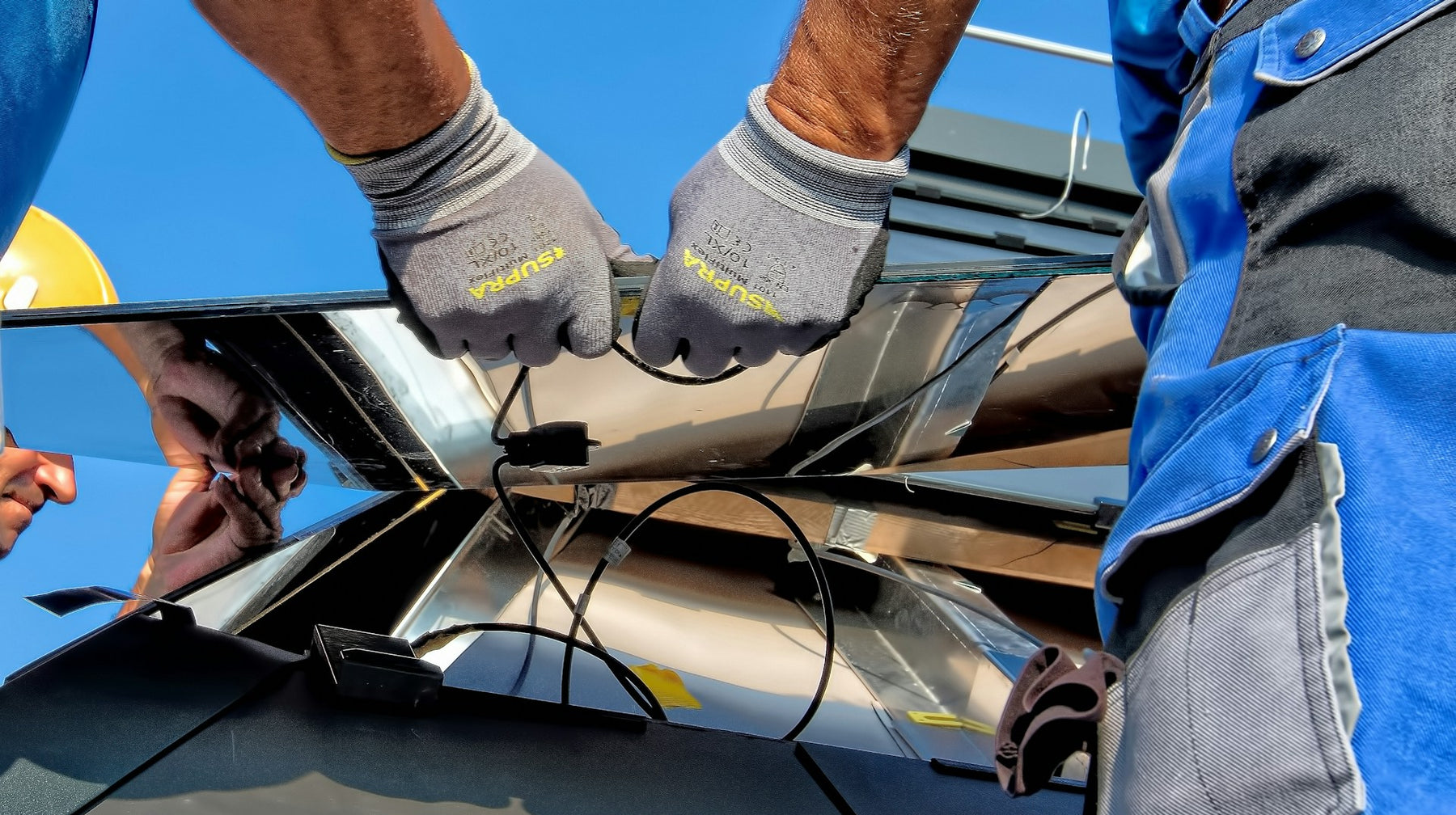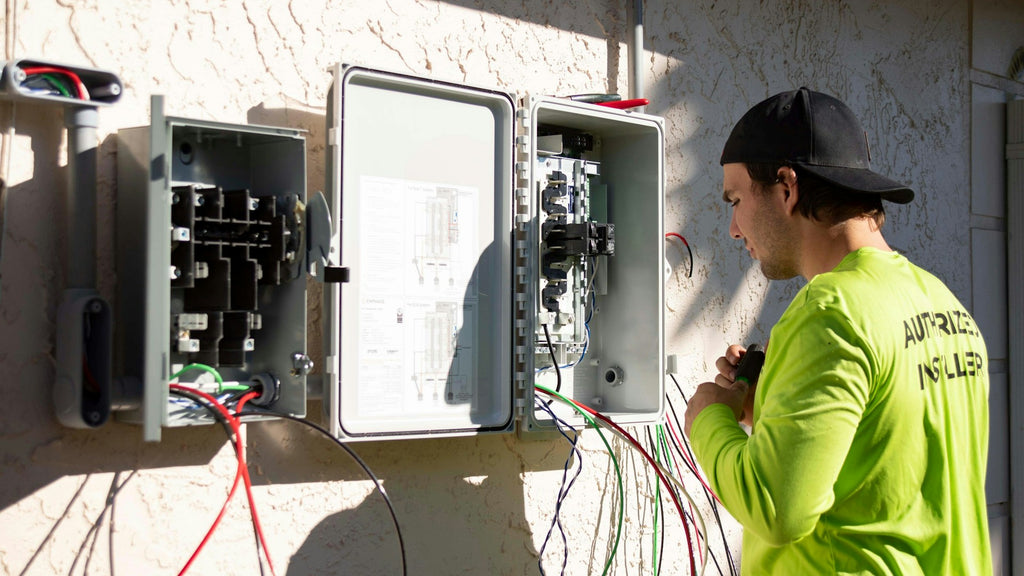
Should Solar Inverters Be Indoor or Outdoor?
Outdoor installation of solar inverters is more common than indoor installation primarily because it saves space, improves energy transfer efficiency, and lowers installation costs. However, when choosing the optimal location, considerations should include protection, ease of maintenance, and local climate conditions. Indoor installations provide better protection from extreme weather and moisture and are easier to monitor and maintain, but they require well-ventilated and dry spaces.
This article explores the pros and cons of indoor and outdoor installations with an aim to aid German homeowners and businesses in making informed decisions.
Quick Comparison Between Outdoor and Indoor Installation:
| Aspect | Outdoor Installation | Indoor Installation |
|---|---|---|
| Space Optimization | Uses unused exterior space, avoiding disruption and costs associated with creating room indoors | Requires well-ventilated and dry spaces indoors |
| Energy Transfer Efficiency | Minimizes energy loss during transmission by placing inverters closer to solar panels | May have longer cabling between solar panels and inverter, leading to potential energy loss |
| Weather Protection | Weatherproof enclosures protect inverters from rain, snow, extreme temperatures, and dust | Provides better protection from extreme weather and moisture |
| Maintenance Accessibility | Offers easier access for maintenance personnel without interrupting living spaces or business operations | Allows for straightforward access for routine checks and urgent repairs |
| Cost Effectiveness | Requires fewer modifications to existing structures, reducing upfront costs | May require additional construction or retrofitting to accommodate the unit |
| Ideal Locations | North-facing walls, under architectural shades, beside vented structures, within garden features, against utility walls | Basements, garages, utility rooms, dedicated enclosures |
| Security | Potentially more vulnerable to theft or tampering | Less vulnerable to theft or vandalism |
Why Install Solar Inverters Outdoor
Installing solar inverters outdoors is commonly practiced due to several practical reasons:
- Space Optimization: In dense urban areas or properties with limited indoor space, such as small residential homes or commercial buildings, fitting a solar inverter indoors can be a challenge. Outdoor installation circumvents this by using unused exterior space, avoiding the disruption and costs associated with creating room indoors.
- Proximity to Solar Panels: The efficiency of energy transfer between solar panels and inverters diminishes with distance due to cable resistance. By placing inverters closer to the panels outdoors, energy loss during transmission is minimized, leading to a more efficient and productive solar power system, especially crucial in large-scale installations or in settings where every watt counts.
- Weather Protection: While outdoor conditions can be harsh, advances in technology have led to the development of durable, weatherproof enclosures that protect inverters from rain, snow, extreme temperatures, and dust. This ensures that even in variable climates, such as those experienced in much of Europe, inverters can operate reliably and without interruption over the years.
- Maintenance Accessibility: Outdoor installations offer easier access for maintenance personnel, eliminating the need to enter living spaces or interrupt business operations. This accessibility is particularly beneficial in situations requiring quick repairs or during regular maintenance checks, ensuring that the system operates at optimal efficiency with minimal downtime.
- Energy Efficiency: By reducing the length of cabling between the solar panels and the inverter, not only is energy loss decreased, but the overall system efficiency is improved. This is particularly important in settings aiming for maximum energy output and sustainability, such as eco-friendly buildings or in industries where energy demand is high.
- Cost Effectiveness: Installing an inverter outdoors can be more cost-effective compared to indoor installation, which may require additional construction or retrofitting to accommodate the unit. Outdoor setups typically require fewer modifications to existing structures, reducing upfront costs and streamlining the installation process, making solar power more accessible and appealing to a wider range of property owners.
However, the outdoor setting poses its own set of challenges, primarily from the weather. Sun, rain, wind, and temperature extremes can take their toll on electrical equipment. This is where modern technology steps in: weatherproof enclosures. These protective housings are designed to shield inverters from the elements, combatting moisture, dust, and temperature fluctuations. With these enclosures, the inverters are not only safeguarded, but their operational lifespan is significantly extended, making outdoor installation a viable and practical option.

Ideal Places for Outdoor Installation
The right locations for an outdoor solar inverter may include:
- North-Facing Walls: In the Northern Hemisphere, north-facing walls receive less direct sunlight throughout the day, making them cooler and more suitable for inverter installation. This placement helps avoid the risk of overheating and extends the life of the equipment.
- Under Architectural Shades: Installing the inverter under a building's overhang or in the shadow of architectural features can provide natural protection from the sun. This can include areas beneath balconies, awnings, or large window ledges that offer consistent shade while allowing for sufficient air circulation.
- Beside or Behind Vented Structures: Placing the inverter beside or behind structures with natural or built-in ventilation - such as lattice walls, ventilated sheds, or open garages - can ensure it stays cool while being protected from direct sunlight.
- Within Garden or Yard Features: Strategic placement within a garden, such as behind tall bushes, trees (considering their growth and the potential for falling leaves or debris), or decorative structures, can shield the inverter from harsh sunlight while blending seamlessly with the landscape.
- Against Utility or Garden Walls: Utility areas or walls that do not face the sun directly can be ideal for mounting inverters. These spots often provide natural shading and are typically underutilized, making them perfect for outdoor installations.
Note that while selecting these spots, ensure the area remains well-ventilated, free from standing water, and accessible for maintenance.

Why Solar Inverters Are Installed Indoor
In contrast, solar inverters are sometimes installed indoors considering the following:
- Protection from Extreme Weather: Inverters are sensitive to temperature fluctuations and moisture. By installing them indoors, they are kept away from the harsh outdoor environment, which includes freezing winters and scorching summers, particularly relevant in regions with significant seasonal variations. This controlled environment prevents weather-related wear and tear, thereby enhancing the inverter's longevity.
- Dust and Debris Shield: Indoors, the inverter is less exposed to dust, leaves, and other forms of debris that can clog up or corrode outdoor machinery. This is particularly beneficial in areas prone to dust storms, heavy pollen, or urban pollution, where external elements can compromise the efficiency and lifespan of outdoor equipment.
- Moisture Avoidance: Indoor installation naturally protects the inverter from rainwater and ambient moisture, which can lead to rusting, short circuits, or other moisture-related damages. This is especially crucial in regions with high humidity or frequent rainfall, ensuring the inverter's components remain dry and functional.
- Ease of Maintenance and Monitoring: Having the inverter inside the premises allows for straightforward access for routine checks and urgent repairs without the need to step outside. This accessibility ensures that any potential issues can be swiftly identified and rectified, minimizing downtime and maintaining system efficiency.
- Security from Theft and Vandalism: Indoors, the inverter is less vulnerable to theft or tampering, which is an important consideration in areas with high crime rates or for properties that are frequently left unattended. Securing the inverter indoors adds an extra layer of safety and peace of mind for the property owner.

Best Places for Indoor Installation
The best indoor locations for solar inverters combine cool, dry conditions with accessibility:
- Basements: Typically the coolest part of a house, basements offer an ideal environment for inverters due to their lower temperatures and reduced exposure to sunlight. This can be particularly advantageous during hot summers. However, it's vital to ensure that the basement is not prone to flooding or dampness, as moisture can damage the inverter. Adequate ventilation must be established to prevent overheating and to maintain air quality.
- Garages: A garage can serve as a practical location for an inverter as it is usually well-ventilated, easily accessible, and separated from the main living areas. This reduces the risk of noise disturbances from the inverter to the household. The primary considerations here are ensuring that the garage does not reach high temperatures during summer months and that the inverter is mounted away from direct sunlight and any potential physical hazards, such as moving vehicles or tools.
- Utility Rooms: These areas are designed to house appliances and typically have built-in ventilation systems, making them suitable for inverter installation. The utility room should be free from water heaters or furnaces to avoid excess heat and should not contain flammable materials or chemicals to reduce fire risks. Space should be ample, not just for the inverter but also for safe, unobstructed access for maintenance and emergency shutoff.
- Dedicated Enclosures: For homes without a suitable existing space, creating a dedicated enclosure for the inverter is an option. This could be a small, ventilated cabinet or room specifically designed to meet the inverter's environmental needs. The enclosure should be located in an area of the home that remains cool and dry, away from direct sunlight and household traffic, ensuring both the safety and longevity of the device.
The Bottom Line
Whether to install your solar inverter indoors or outdoors depends on your specific situation, considering space, environmental factors, and safety requirements. Outdoor setups might lead to more efficiency and cost savings, while indoor installations can offer better protection and longevity.
If you are interested in this topic, you may share this article and engage in further discussions with your friends.
Should you intend more about sustainable energy solutions tailored to Germany and other European countries, please feel free to let us know!

Leave a comment